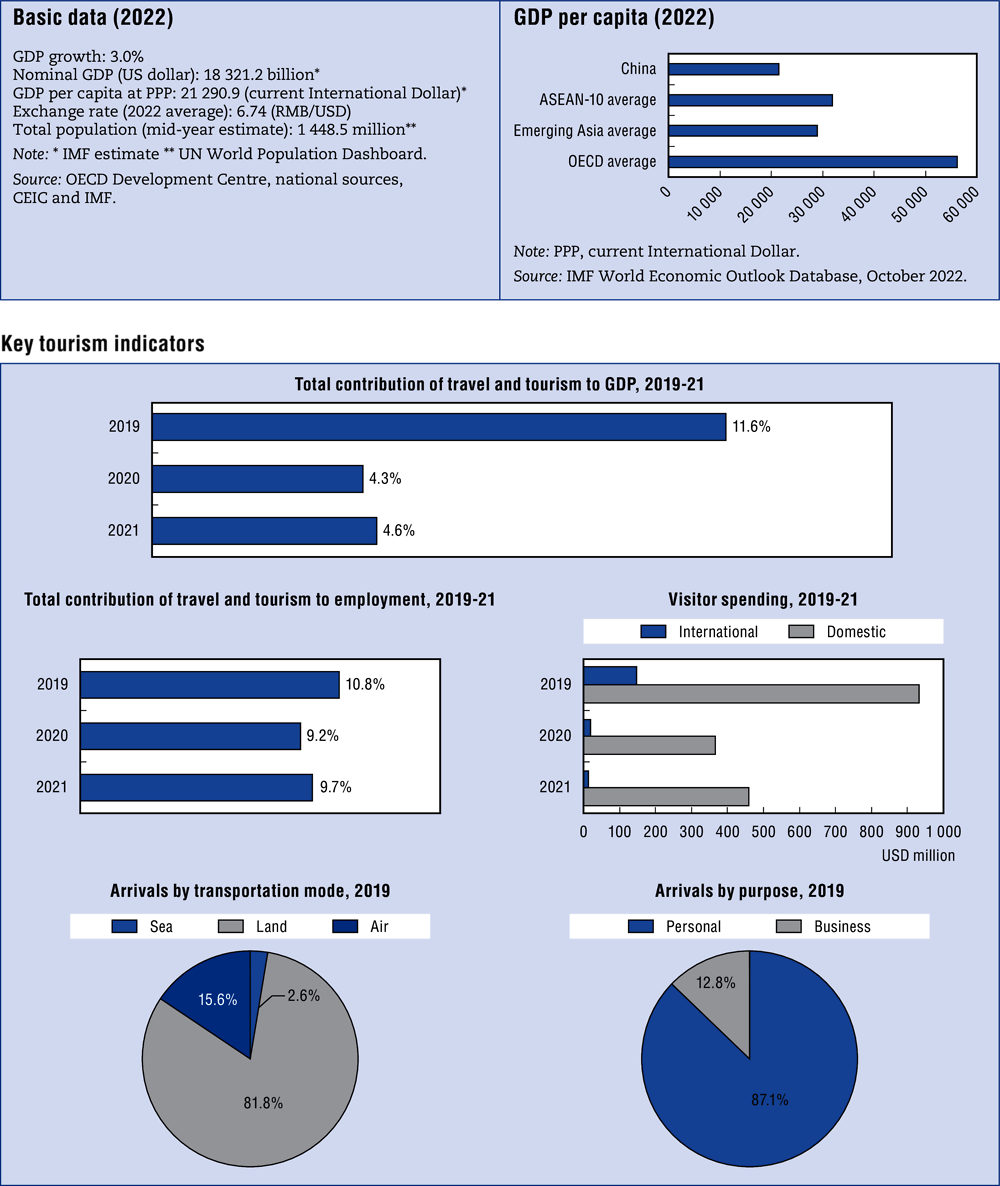Tourism growth has been phenomenal for China, but large crowds can damage attractions and elevate maintenance costs. Therefore, crowd management is a concern for the sector.
High tourism numbers convey enormous financial benefits, and the government has made tangible efforts to enhance conservation of the country’s cultural heritage and natural resources. For example, the heritage site of Lijiang has undergone considerable renewal, which has contributed to an influx of tourists wishing to discover a traditional culture that is being preserved in both architectural aesthetics and old cultural charm. At the same time, rural areas are facing rapid urbanisation and changes in land regulations. This threatens heritage sites, which become vulnerable to development (Yu et. al., 2016; Li et. al., 2020). Efforts to protect and rejuvenate the heritage sites of cities that are urbanising, such as Shigatse in Tibet and Quanzhou in Fujian province, would result in an increase in tourism, which would help fund future preservation efforts.
China’s unique landscapes, such as the grassland steppes of the Urumqi area, the Guilin bridge, the Tibetan plains and many other places, provide settings that could be leveraged for movie making, whether Chinese or international, and this could also benefit tourism.
China’s latest five-year master plan for tourism (2021-25) calls for a stronger modern system for the tourism sector integrated with cultural development (State Council, 2022). With modern techniques of spatial characterisation of cities with historical “old towns”, the unique identity and structures of heritage towns can be preserved. A meticulous approach is needed when development is planned for these cities so that new infrastructure does not mean destruction of the heritage. Development should incorporate the city’s heritage into urban planning, in addition to embedding pride and acceptance by the city’s administrators and, more importantly, the city’s residents.
Where there are crowds at the attractions, technology can play an important part in ensuring that carrying capacity is not exceeded. For example, an app could provide regular and timely crowd monitoring information at popular destinations and suggestions of nearby attractions as alternative sites to visit.
The master plan calls for harnessing existing attractions to regional and co-ordinated development strategies. Tourism policy makers may want to consider ways of creating themes that connect various nearby attractions for special-interest tourists – for example, those interested in religious attractions, shopping or nature parks. The use of technology and organisational presentation of the attractions on offer would bolster this effort.
China’s advantage as a destination is that it is a vast country with multiple ethnic communities, such as in the Tibetan and Mongolian steppes, along with Lijiang and Xishuangbanna. Further infrastructure connectivity balanced with preservation of the communities’ way of life would benefit both domestic and international tourists. It might be useful to consider: i) determining capacities of attractions; and ii) developing strategies to manage crowd influx. Carefully controlled marketing and promotion need to be combined with measures to support capacity.

